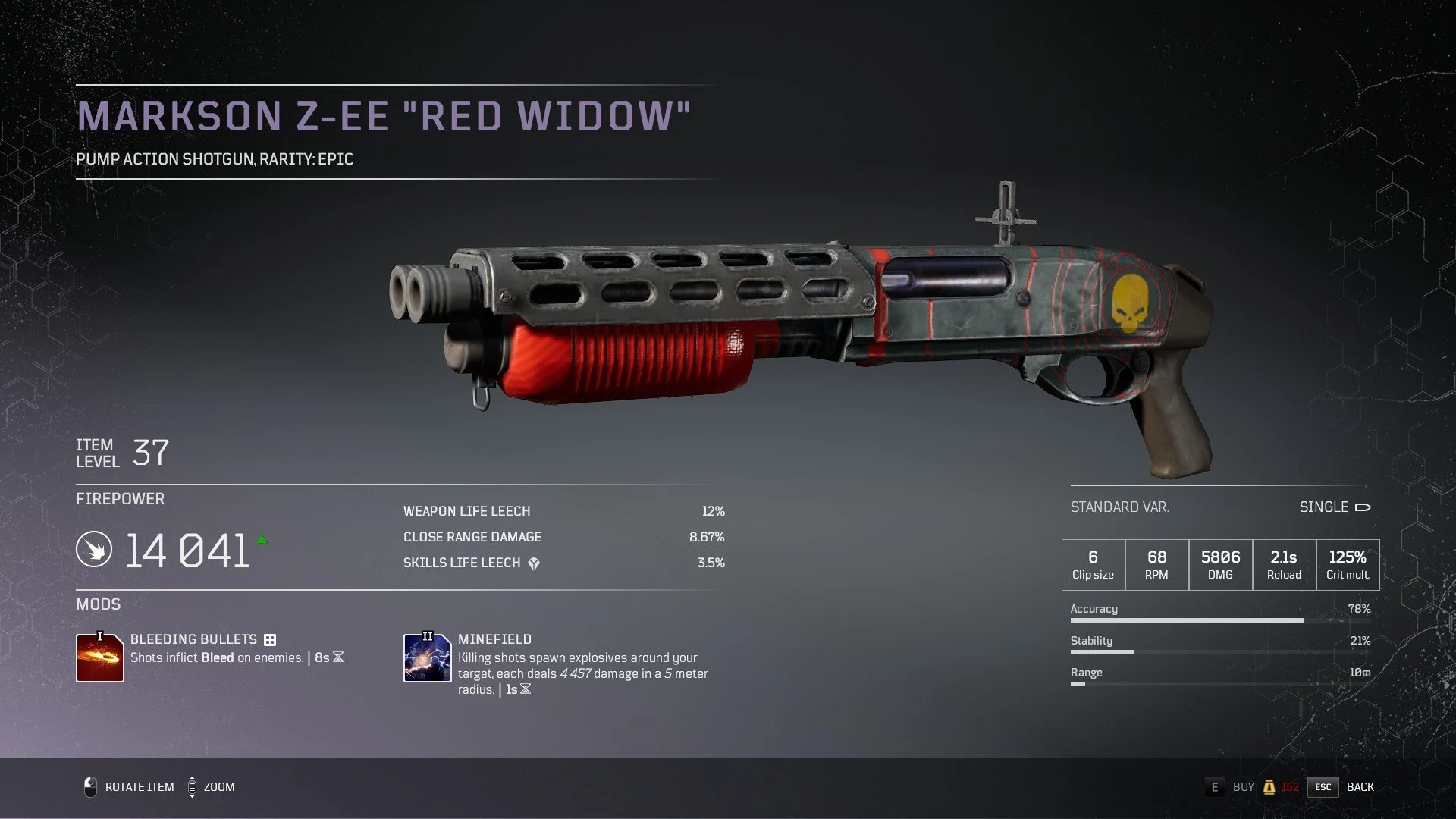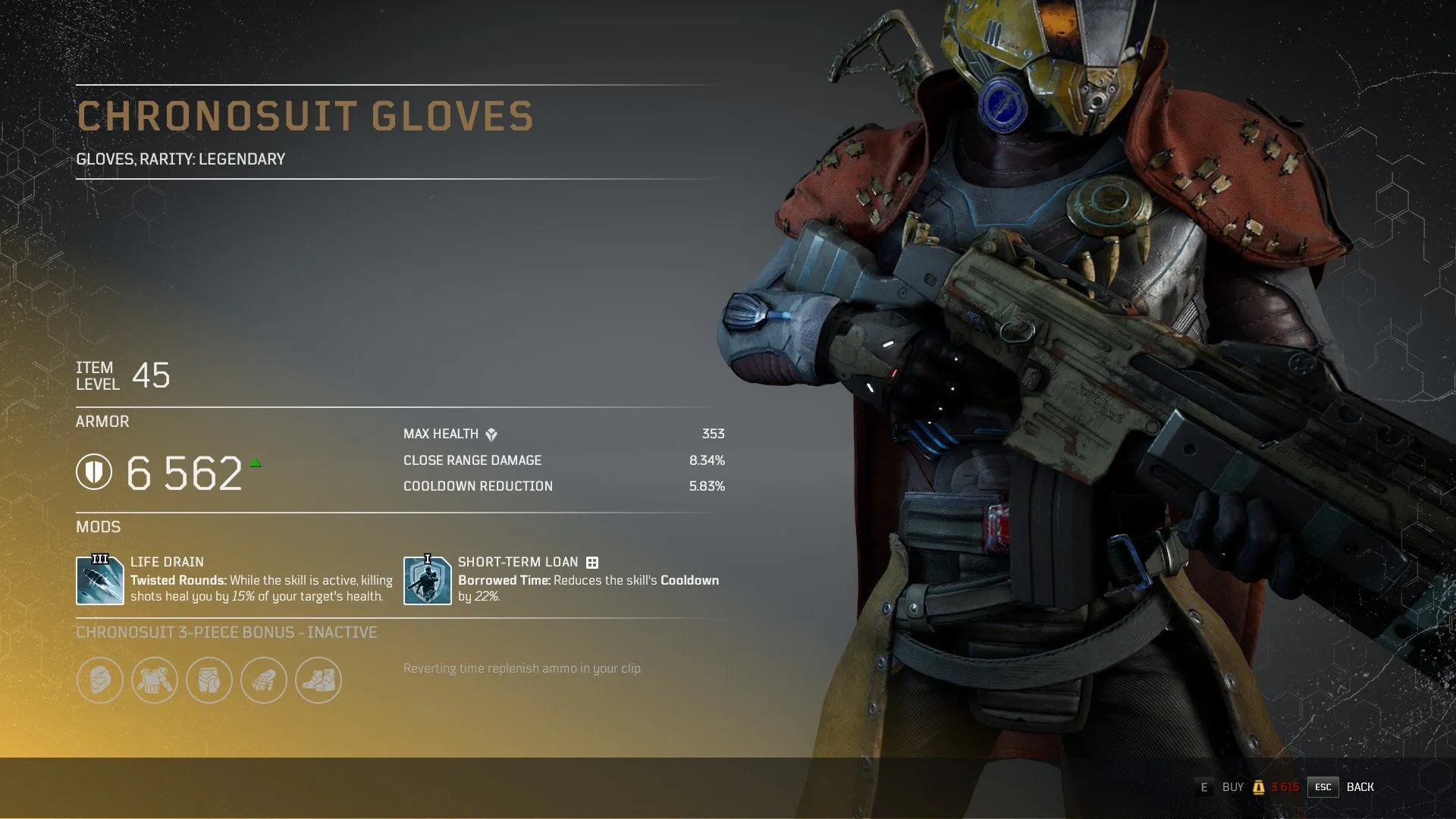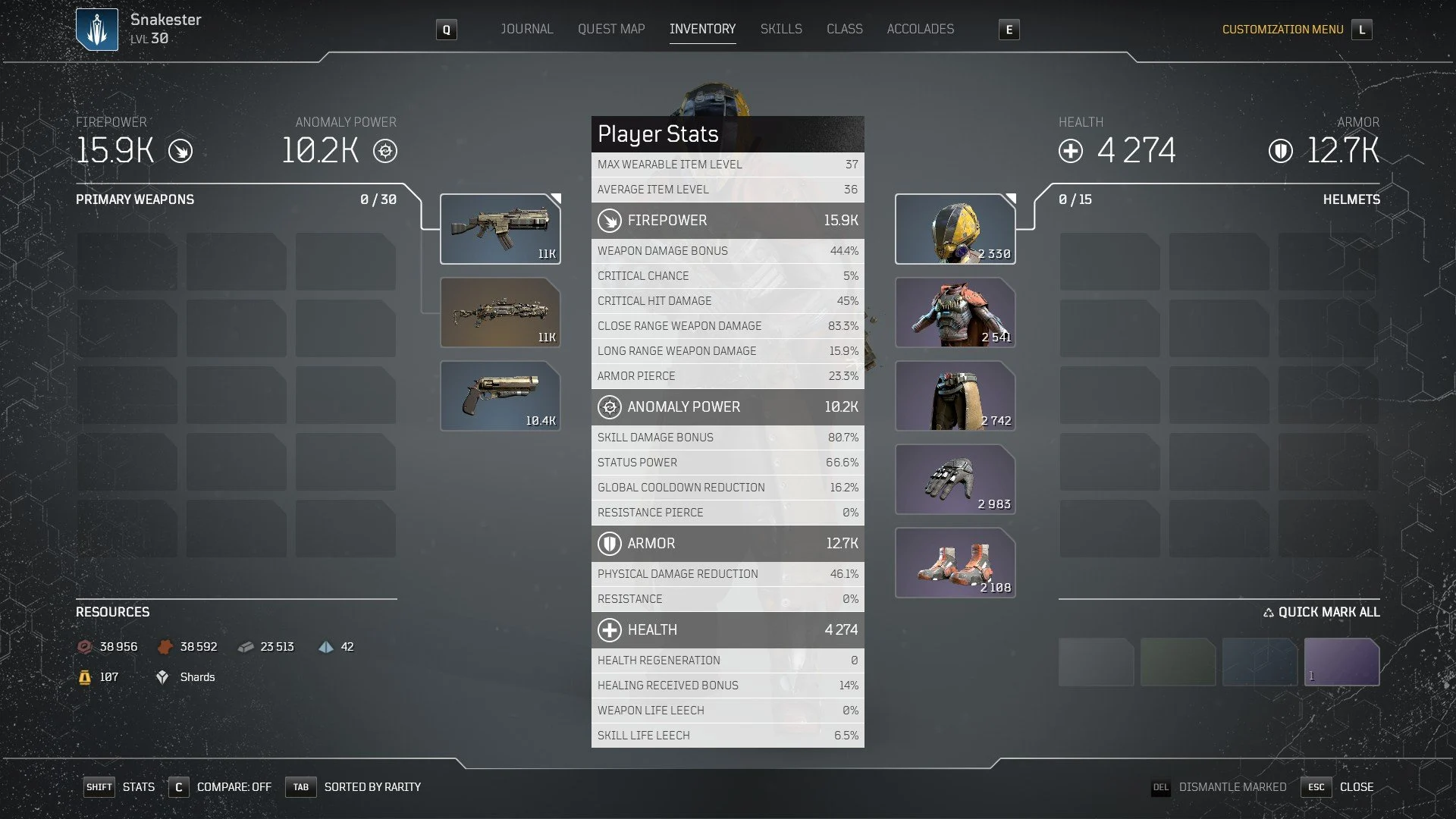Outriders is a looter shooter with all sorts of unique traits on weapons such as Weapon Leech. This is one of many strong methods for keeping yourself alive. Especially when you get into the endgame content for Outriders. Continue reading our guide below to learn more about Weapon Leech and other forms of healing too.
| What is Weapon Leech in Outriders |
| What is Skill Leech in Outriders |
| Other Healing Methods |
What is Weapon Leech in Outriders

This epic rarity weapon has both Weapon Life Leech and Skills Life Leech. You can also increase their stats via crafting with Dr. Zahedi.
If you’ve spent some time playing Outriders, you’re likely familiar with how healing works. Every class has a unique healing method that revolves around killing enemies or dealing damage. However, there are a few other ways to heal such as Weapon Leech. This is an attribute/trait that you can get on both your weapons and armor for healing from weapon damage. The Weapon Leech mechanic takes every percentage from your gear and adds it together, giving you that much health back from weapon damage.
For example, if you have 20% Weapon Leech and deal 100 damage, you’ll get 20 health back. This makes it a popular attribute regardless of whether you’re playing Outriders’ campaign or endgame content. Even a small amount of it goes a long way when you start hitting numbers in the thousands and later millions. If you want to see how much Weapon Leech you have in your current build, there is a way. First, enter your inventory where you can see your gear. Then, there’s a button prompt at the bottom left corner for “Stats”. On PC, this is Shift by default. This button opens up your overall stats where Weapon Life Leech is near the bottom.
Certain classes also have nodes you can put class points into for extra Weapon Leech. The Trickster has a late-game node along the Assassin branch named Transfusion. This provides an extra 5% Weapon Leech, even if you don’t have any, to begin with.
What is Skill Leech in Outriders
Skill Leech is similar to Weapon Leech in how it heals you for a percentage of damage dealt. However, instead of healing based on your weapon damage, it’s based on skill damage. This isn’t as popular of a trait because skills tend to be on the weaker side for endgame content. But, that doesn’t mean you can’t have fun with it during the campaign or on lower difficulties. This also depends on what skills you’re using as it won’t benefit any that don’t deal damage. Such as the Trickster’s early Slow Field skill.
As mentioned in the previous section, you can find your overall Skill Leech percentage under the Stats section. You can reach it from the inventory screen. Also, you can find class nodes providing Skill Leech too. This is another way to increase your overall healing.
Other Healing Methods

The Chrononsuit Gloves are a legendary weapon with a mod making the Twisted Rounds skill heal. For every kill, you’ll receive 15% of your target’s health.
There are several ways to heal in Outriders once you start finding new mods for weapons and armor. These can vary from increasing damage to regenerating health on shot. This is why it’s important to check shops every now and then for useful mods you may want. As explained in our crafting guide, you can unlock new mods by dismantling weapons with them. Then, you can apply them to new gear for creating builds like our Trickster one here.
Aside from active ways to heal, health also regenerates back to a certain threshold marked on your health bar. According to in-game guides, you can supposedly increase the amount with class points. The Trickster class doesn’t seem to have any nodes that do so.
If this Outriders guide taught you something, be sure to check out our guide hub here for more tips and tricks. We’ve listed a few guides below that may also be of interest to you. And if you have a question for something we haven’t covered yet, feel free to ask in the comments below.

Jeff is a journalist with over 10 years of experience writing, streaming, and making content about video games. With an associate degree in journalism, he’s a sucker for RPGs, survival games, roguelikes, and more.


